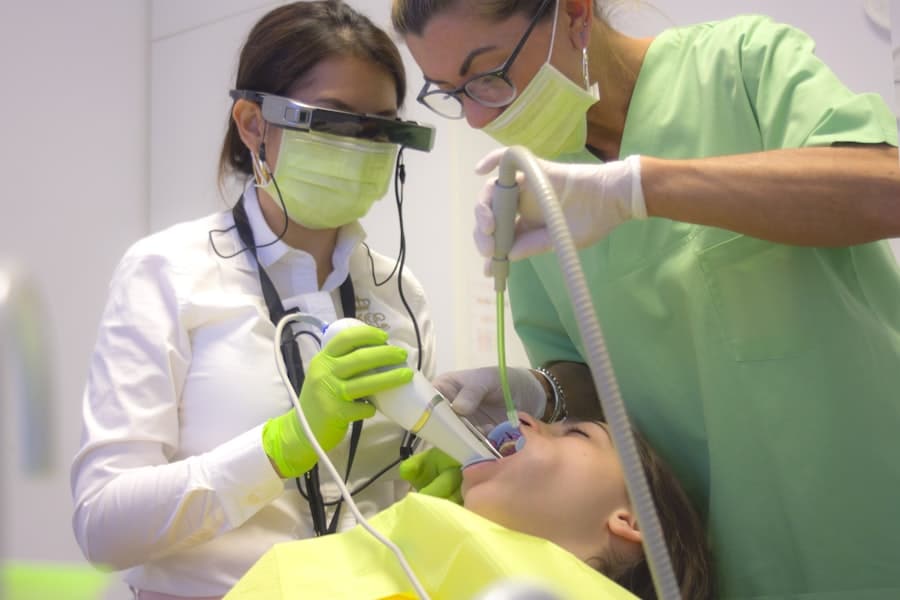Augmented Reality (AR) is a transformative technology that overlays digital information onto the real world, enhancing the user’s perception and interaction with their environment. Unlike Virtual Reality (VR), which immerses users in a completely digital realm, AR enriches the physical world by integrating computer-generated elements, such as images, sounds, and other sensory stimuli. This blending of the virtual and physical realms has gained significant traction in recent years, driven by advancements in hardware, software, and user interface design.
The potential of AR extends far beyond entertainment and gaming; it has begun to reshape sectors such as education, healthcare, retail, and manufacturing. By providing contextual information in real-time, AR can enhance learning experiences, improve surgical precision, streamline assembly processes, and create immersive shopping experiences.
As the technology continues to evolve, it is essential to explore its current applications, challenges, advancements, and future potential, particularly in the realm of wearable interfaces. Wearable AR devices, such as smart glasses and headsets, promise to revolutionize how users interact with their surroundings by providing hands-free access to information and tools.
Key Takeaways
- AR overlays digital information onto the real world, enhancing the user’s perception of their environment.
- Current applications of AR in wearable interfaces include gaming, navigation, and industrial maintenance.
- Challenges of current AR technology include limited field of view, battery life, and social acceptance.
- Advancements in AR technology include improved display technology, better tracking, and more efficient hardware.
- Potential future applications of AR in wearable interfaces include healthcare, education, and retail.
Current Applications of AR in Wearable Interfaces
Wearable interfaces utilizing AR technology have found applications across various fields, significantly enhancing user experiences and operational efficiency. In the healthcare sector, for instance, AR-enabled smart glasses are being used by surgeons to overlay critical patient data directly onto their field of vision during procedures. This capability allows for real-time access to vital statistics and imaging data without diverting attention from the surgical site.
Companies like Microsoft with their HoloLens have pioneered this application, enabling surgeons to visualize 3D models of organs or tissues while performing complex operations. Such integration not only improves accuracy but also reduces the cognitive load on medical professionals. In the realm of industrial training and maintenance, AR wearables are proving invaluable.
Companies like Boeing have implemented AR technology in their assembly lines to assist technicians in wiring and assembling aircraft components. By using smart glasses that display step-by-step instructions and visual cues directly in their line of sight, workers can complete tasks more efficiently and with fewer errors. This application not only accelerates training for new employees but also enhances productivity by minimizing the time spent searching for information or tools.
The ability to visualize complex schematics or instructions in real-time allows for a more intuitive understanding of tasks that would otherwise require extensive training.
Challenges and Limitations of Current AR Technology
Despite the promising applications of AR in wearable interfaces, several challenges and limitations hinder its widespread adoption. One significant issue is the technological constraints related to hardware capabilities. Many current AR devices suffer from limited battery life, processing power, and field of view.
For instance, smart glasses often have a narrow display area that restricts the amount of information that can be presented at once. This limitation can lead to user frustration when trying to access multiple data points simultaneously or when navigating complex environments. Moreover, the user experience can be adversely affected by issues such as latency and tracking accuracy.
In environments where rapid movements occur or where lighting conditions fluctuate significantly, AR systems may struggle to maintain accurate tracking of the user’s position and orientation. This can result in a disjointed experience where digital overlays do not align correctly with physical objects, leading to confusion or even motion sickness in some users. Addressing these technical challenges is crucial for enhancing the reliability and effectiveness of AR applications in wearable interfaces.
Advancements in AR Technology
Recent advancements in AR technology are paving the way for more sophisticated and user-friendly wearable interfaces. One notable development is the improvement in computer vision algorithms that enable better object recognition and environmental mapping. These advancements allow AR systems to understand their surroundings more accurately, facilitating seamless integration of digital content with the physical world.
For example, advancements in simultaneous localization and mapping (SLAM) technology have significantly enhanced the ability of AR devices to track their position in real-time while creating a detailed map of the environment. Additionally, the integration of artificial intelligence (AI) into AR systems is revolutionizing how users interact with digital content. AI algorithms can analyze user behavior and preferences to deliver personalized experiences tailored to individual needs.
For instance, an AR application could learn a user’s habits over time and suggest relevant information or tools based on their previous interactions. This level of personalization not only enhances user engagement but also increases the overall utility of AR applications in wearable devices.
Potential Future Applications of AR in Wearable Interfaces
The future of AR in wearable interfaces holds immense potential across various sectors. In education, for example, AR could transform traditional learning environments by providing immersive experiences that engage students on multiple sensory levels. Imagine students wearing AR glasses that overlay historical events onto their surroundings or allow them to interact with 3D models of complex scientific concepts.
Such applications could foster deeper understanding and retention of knowledge by making learning more interactive and engaging. In retail, AR has the potential to revolutionize how consumers shop by providing virtual try-on experiences for clothing or accessories. Wearable AR devices could allow customers to see how a piece of clothing looks on them without physically trying it on, streamlining the shopping process and enhancing customer satisfaction.
Furthermore, businesses could leverage AR to create interactive advertisements that engage consumers in novel ways, driving brand loyalty and increasing sales.
Impact of AR on User Experience and Interaction
The integration of AR into wearable interfaces fundamentally alters user experience by creating more intuitive and engaging interactions with technology. By overlaying digital information onto the physical world, users can access relevant data without interrupting their activities or diverting their attention from their surroundings. This hands-free approach allows for a more seamless interaction with technology, enabling users to multitask effectively while remaining aware of their environment.
Moreover, AR enhances collaboration among users by facilitating shared experiences in real-time. For instance, remote teams can use AR wearables to collaborate on projects by visualizing 3D models or schematics together, regardless of their physical locations. This capability fosters a sense of presence and connection among team members, improving communication and collaboration outcomes.
As AR technology continues to evolve, its impact on user experience will likely expand further, creating new opportunities for interaction that were previously unimaginable.
Integration of AR with Other Emerging Technologies
The future landscape of AR is poised for significant transformation through its integration with other emerging technologies such as 5G connectivity, Internet of Things (IoT), and machine learning. The advent of 5G networks promises to enhance AR experiences by providing faster data transfer rates and lower latency. This improvement will enable more complex applications that require real-time data processing and interaction with multiple devices simultaneously.
For instance, smart cities could leverage AR combined with IoT sensors to provide citizens with real-time information about traffic conditions or public transportation options directly through their wearable devices. Machine learning algorithms can further enhance AR applications by enabling systems to learn from user interactions and adapt accordingly. This capability could lead to more personalized experiences where AR applications anticipate user needs based on historical data.
For example, an AR navigation app could learn a user’s preferred routes over time and suggest optimal paths based on traffic conditions or personal preferences.
Ethical and Privacy Considerations in the Future of AR in Wearable Interfaces
As AR technology continues to advance and become more integrated into daily life through wearable interfaces, ethical and privacy considerations will become increasingly important. One major concern revolves around data privacy; wearable AR devices often collect vast amounts of personal data about users’ behaviors, preferences, and locations. Ensuring that this data is handled responsibly and transparently will be crucial in maintaining user trust.
The ability of AR devices to capture real-time images or videos raises questions about who has access to this information and how it may be used. For instance, if an individual wearing an AR device enters a public space where others are present, there is potential for unintentional recording or sharing of private moments without consent.
Establishing clear guidelines and regulations surrounding the use of AR technology will be essential in addressing these concerns while fostering innovation in this rapidly evolving field. As we look ahead at the future of augmented reality in wearable interfaces, it is clear that while there are significant challenges to overcome, the potential benefits are vast. The intersection of technology with human experience offers exciting possibilities that could redefine how we interact with our environment and each other.
In a related article discussing wearable technology, Which Smartwatches Allow You to View Pictures on Them? explores the capabilities of smartwatches in displaying images. This article delves into the features of various smartwatches that enable users to view and interact with pictures directly on their wearable devices. As the future of augmented reality continues to evolve, the integration of visual content on wearable interfaces like smartwatches could play a significant role in enhancing user experiences and expanding the possibilities of AR technology.
FAQs
What is AR (Augmented Reality)?
AR (Augmented Reality) is a technology that superimposes digital information such as images, videos, or 3D models onto the real world, typically viewed through a device such as a smartphone, tablet, or AR glasses.
What are wearable interfaces?
Wearable interfaces are devices that can be worn on the body and are designed to interact with the user and the environment. Examples include smartwatches, fitness trackers, and AR glasses.
How is AR being used in creating next-generation wearable interfaces?
AR is being used to enhance the user experience of wearable interfaces by providing real-time information, interactive 3D models, and immersive experiences. This can include applications in gaming, navigation, healthcare, and industrial settings.
What are the potential benefits of AR in next-generation wearable interfaces?
The potential benefits of AR in next-generation wearable interfaces include improved user interaction, enhanced productivity, hands-free operation, and the ability to access information in real time without the need to look away from the task at hand.
What are some challenges in the development of AR for wearable interfaces?
Challenges in the development of AR for wearable interfaces include technical limitations such as battery life and processing power, user interface design, privacy concerns, and the need for seamless integration with the user’s environment.



